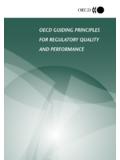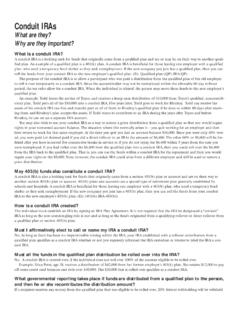Transcription of Special Theme – Tobacco Tobacco industry tactics …
1 Tobacco industry tactics for resistingpublic policy on healthVYussuf Saloojee1& Elif Dagli2 The tactics used by the Tobacco industry to resist government regulation of its products include conducting publicrelations campaigns, buying scientific and other expertise to create controversy about established facts, fundingpolitical parties, hiring lobbyists to influence policy, using front groups and allied industries to oppose Tobacco controlmeasures, pre-empting strong legislation by pressing for the adoption of voluntary codes or weaker laws, andcorrupting public officials. Formerly secret internal Tobacco industry documents provide evidence of a 50-yearconspiracy to resist smoking restrictions, restore smoker confidence and preserve product liability defence.
2 Thedocuments reveal industry -wide collusion on legal, political and socially important issues to the Tobacco industry andclearly demonstrate that the industry is not disposed to act ethically or responsibly. Societal action is therefore requiredto ensure that the public health takes precedence over corporate profits. Recommendations for reducing the politicalinfluence of the Tobacco industry include the following. Every Tobacco company in every market should publiclydisclose what it knew about the addictiveness and harm caused by Tobacco , when it obtained this information, andwhat it did about it. The industry should be required to guarantee internationally recognized basic consumer rights toits customers.
3 Trade associations and other industry groupings established to deceive the public should be recommendations should be incorporated into WHO s Framework Convention on Tobacco : Tobacco industry , legislation; public policy; health policy; persuasive communication; mass media;propaganda; public relations; page 908 le re sume en franc ais. En la pa gina 909 figura un resumen en espan decides health policy? Tobacco is a major health hazard and an importanteconomic commodity. If it were not harmful tohealth there would be no reason to control its use. Onthe other hand, if the market for Tobacco were smallthere would be little opposition to the regulation ofthis trade.
4 As a result of the conflict of interestbetween health and corporate wealth, public policyon Tobacco has evolved in an ad hoc fashion. It hasemerged as a product of different pressures,including those of the Tobacco industry and thepublic health Tobacco industry has a formidable recordof resistance to legislation and of developing newmarkets for its products. Even as its key markets inhigh-income countries were shrinking it succeeded inincreasing sales in middle-income and low-incomecountries. As was noted in a South African news-paper: It is an unpalatable fact that growth in thisindustry will take place where governments are leasthostile and where populations are least educatedabout the harmful effects of smoking (1).
5 Four cigarette manufacturers dominate aboutthree-quarters of the global market: Philip Morris,British American Tobacco (BAT) and Japan Tobaccoare transnational companies; the China NationalTobacco Corporation is a monopoly, producingabout 30% of the world s cigarettes but mainlysupplying its domestic market (2). China is, however,preparing to become a major exporter of future of the Tobacco industry lies in theworld s developing countries. Between 1986 and1996, cigarette exports from the United States grewby 260%. Philip Morris now makes more profitselling cigarettes abroad than in the United States (3).BAT sells about 70% of its cigarettes in Africa, Asia,Latin America, and Eastern Europe.
6 A BAT bookletnotes: The 1990s have seen new opportunities forthe Group, especially in Central and Eastern Europeand in the Far East, with the opening up of marketspreviously closed to Western Tobacco manufac-turers . BAT has acquired factories in Hungary(1992), Ukraine (1993), the Russian Federation(1994), Uzbekistan (1994), Poland (1995), and theCzech Republic (1995) (4).Questioned about the ethics of targeting theworld s poor, a manager at Rothmans Export Ltd(now part of BAT) replied: It would be stupid toignore a growing market. I can t answer the moraldilemma. We are in the business of pleasing ourshareholders (5). This narrow corporate philosophy,VThis article is based on a paper presented at the WHO InternationalConference on Tobacco and Law, New Delhi, 7 9 January Director, National Council Against Smoking, South should be addressed to this author at the followingaddress: PO Box 23244, Joubert Park, 2044, South Africa(email.)
7 Of Paediatrics and Head, Department of Pulmonology,Marmara University, Istanbul, Theme Tobacco902#World Health Organization 2000 Bulletin of the World Health Organization, 2000,78(7)involving an exclusive commitment to shareholdersrather than accountability to all stakeholders, includ-ing customers, means that anything is acceptable indefence of company Tobacco industry has one aim: to sell themaximum number of cigarettes. In order to achievethis it is prepared to crush any obstacle. Themanufacturers have ignored the harm caused bycigarettes and for decades they have engaged in avigorous effort to silence critics, distort science,influence public opinion, control public policy andcoordinate their strategy on insight into their behaviour is provided bythe millions of pages of formerly secret internaldocuments that have been made public because oflitigation.
8 These documents, which are available onthe Internet, take one into the boardrooms of theUnited States Tobacco companies and their coordi-nating centre, the Tobacco consentIn the early 1950s the United States Tobacco industryfound itself besieged by concerns about the safety ofits products as a result of new medical evidenceconclusively linking smoking and cancer (6). Increas-ing concern in the media and the scientific commu-nity about the role of cigarettes in causing disease hadreduced consumer confidence. A decline in salescombined with the threat of litigation from ailingsmokers led to what was referred to in industrydocuments as the 1954 emergency .The industry reacted by mobilizing its collec-tive resources to regain control and to defend itselfon three major fronts, namely litigation, politics andpublic opinion (7).
9 In December 1953 the heads of allbut one of the cigarette manufacturers in the UnitedStates consulted Hill and Knowlton, a publicrelations company. A memorandum after this meet-ing noted that the one essential job was to stop publicpanic and that the only problem was to establishpublic confidence and create public assurance (8).The goal was to preserve company profits, notto protect the public. It was not to identify andeliminate the harm caused by cigarettes but to calmpublic fears and reassure smokers that no change insmoking behaviour was necessary. It was also toprevent government regulation and to avoid litiga-tion. In 1962 an internal memorandum noted that the1954 emergency appeared to have been handledeffectively and that this experience had given rise to arealization by the Tobacco industry of a publicrelations problem that had to be solved in the interestof self-preservation (9).
10 The public relations cam-paign that was initiated in the 1950s continues in fullforce today. In response to evidence that environ-mental Tobacco smoke was harmful to non-smokers,a 1987 memorandum declared that the industry hadto resist smoking restrictions, restore smoker con-fidence and preserve product liability defence. Therewere two prerequisites: the reversal of scientific andpopular opinion that environmental Tobacco smokewas harmful to health, and the restoration of thesocial acceptability of smoking (10).Mobilizing corporate resourcesThe 1953 meeting proposed that the tobaccocompanies should put aside their competitivedifferences and agree on issues of legal, politicaland social importance to the entire industry , and thatthey should jointly establish and fund a centre topromote their general public relations 1954 the industry established the TobaccoIndustry Research Council.













